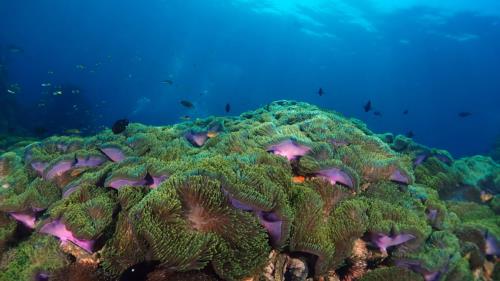
Advice On How To Treat Jellyfish and Coral Stings
Jellyfish and coral stings are not a frequent occurrence in Phuket. The few cases we get are mild, only requiring some basic first aid immediately after the incident. Occasionally around the coast line, we sight box jellyfish and in low season we often have bluebottles wash up on the shore. However it’s incredibly rare to see either around our main Phuket dive sites. Still, the environment we choose to spend our spare time in is not risk free so it’s good to know how to treat jellyfish and coral stings.
What we do have on our dive sites is plenty of stinging fire corals and anthozoans (soft corals, anemones and some hard coral). We understand that the vast majority of divers respect the rules and don’t touch anything but accidents do happen. Prevention is definitely better than cure for all involved.
What’s Happening?
The animals natural defense/attack system is being fired with contact. All of the above are armed with nematocysts, a harpoon like stinging cell which is used both for defence and to subdue their prey. Neutralising the cells is the key component in successful treatment. As long as they’re still active they can inflict further harm. It’s very important to try not to remove any visible tentacles with bare hands. Use gloves or tweezers.
Jellyfish (scyphozoans)
Most of the true jellyfish species that we run into on our Phuket day trips are relatively harmless and only produce mild stings. It can be irritating and should still be treated regardless of the severity of the sting. Some of the species are quite beautiful and some large enough to house other species. They are not fast moving but do keep a respectful distance to avoid accidents.
Anemones, Soft Corals & Hard Corals (anthozoans)
All of the above are very common on our dive sites, accidental contact is probably quite frequent but rarely does it cause more than a slight contact sting and some itching. Occasionally contact with anthozoans can produce more severe symptoms and require treatment. Nemo has probably been responsible for a few stings, clownfish hang out in anemones and photographers can get stung if not careful.
a minefield of anemones
Fire Corals, Hydroids & Bluebottles (hydrozoans)
Fire corals and hydroids are again very common on our dive sites and mostly go unnoticed. Contact with both can produce mild to moderate stings. It may only last a few hours but the pain and rash can return a few days later. If you’re unlucky, the double whammy of a cut and a sting from fire coral can cause more serious issues. Stings inside the wound can lead to infection and tissue necrosis.
Bluebottles or Portugese man o’war often get washed up on Phuket beaches during low season. Although it looks like a jellyfish, it’s actually a colony of animals all adapted to fulfill a specific purpose. When they’re being pushed around the oceans by their sail like bubble, the tentacles can trail for upto 30m. Fortunately the tentacles concertina up when it’s washed ashore but they’re still capable of delivering an extremely painful sting.
Box Jellyfish (cubozoans)
Fortunately an extremely rare animal on our dive sites. There are many different species of box jellyfish and only a few are dangerous. Quick, effective treatment will see the vast majority of victims survive an envenomation but many fatalities have been recorded. Unfortunately some of those have been in Thailand.
rare sighting of a box jellyfish at racha yai
Treatment
For most of the above hospitalisation is rarely necessary with the obvious exception of box jellyfish. If you do get stung, rinse the area with generous amounts of vinegar to neutralise the nematocysts. Remove any visible tentacles with gloves or tweezers and finally wash with salt water. Do not use fresh water. If the victim is still experiencing pain after treatment, they can be given anti-inflammatories, painkillers or anesthetic cream. If symptoms persist then professional medical advice should be sought.
Box jellyfish stings are a completely different ball game. Emergency services need to be called immediately. On site first aid should start with the victim being made comfortable, the area of envenomation should be washed for at least half a minute with vinegar and the patient constantly monitored. In severe cases breathing can be affected and oxygen and assistance in breathing could be required.
Our onboard staff are EFR trained and available to help at all times but obviously we hope it’s not required. Good buoyancy, correct exposure suits and simply being aware of your surroundings will prevent most accidents.
The post How to Treat Jellyfish And Coral Stings appeared first on Local Dive Thailand.